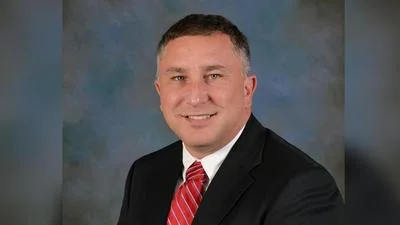Kankakee County Farm Bureau issued the following announcement on Nov. 26.
Illinois reaps the benefit of state and local governments joined by a network of stakeholders to reduce nutrient losses in Illinois waterways, according to Lauren Lurkins, Illinois Farm Bureau director of environmental policy.
On Nov. 18, the Illinois Department of Agriculture (IDOA) and Illinois Environmental Protection Agency (IEPA) released the second Nutrient Loss Reduction Strategy (NLRS) biennial report. Overall, the state seeks to lower all nitrogen and phosphorous moving into water by 45% compared to average 1980-96 levels. Interim goals include a 15% nitrogen reduction and a 25% phosphorus reduction by 2025.
The report covering 2017-18 shows “a huge amount of work with multiple people pitching in,” Lurkins told FarmWeek.
Released in 2015, the statewide NLRS offers voluntary actions to lower nitrogen and phosphorus coming from urban runoff, diffuse nonpoint sources that are predominantly agricultural and specific point sources that are mainly municipal wastewater treatment and industry.
Lurkins credited IDOA and IEPA for their sustained efforts on complicated environmental issues and their work “not just to benefit the environment, but to also motivate citizens.”
Among the report’s highlights are a $59.2 million investment by the ag sector and a $224 million investment by wastewater management facilities.
“Our stakeholders acknowledged the challenges involved in this long-term project since it first got off the ground with preliminary meetings in 2013,“ Lurkins said. “And we will continue to tackle these challenges together.”
Beth Vogt, president of the Illinois Association of Wastewater Agencies, said in a statement, “Wastewater agencies have been aggressively working to reduce phosphorus in our discharges.”
Vogt acknowledged the assistance provided through IEPA low-interest loans for facility construction projects. “Financial support from the state is crucial to continuing these reductions to meet the interim and long-term targets set in the strategy,” she said.
Jean Payne, president of the Illinois Fertilizer and Chemical Association, noted the report highlights the complexity of the nutrient loss issues in Illinois and the “remarkable” efforts of every sector. However, much work remains ahead.
Cindy Skrukrud, Ph.D., Illinois Chapter Sierra Club clean water program director, emphasized the NLRS “is based on sound science and strong collaboration among farmers, wastewater agencies and environmental advocates.”
“We have broad agreement on the steps needed to deliver clean water to communities across Illinois. Now we need the resources to implement the strategy and protect our water supply,” Skrukrud said in a statement.
Lurkins agreed stakeholders from agriculture to wastewater treatment to the environmental community are working together. She added those stakeholders should also reflect on what’s in the biennial report: “It’s an incredibly large effort, and we should celebrate how far we’ve come.”
Original source can be found here.

Source: Kankakee County Farm Bureau
.jpg)





 Alerts Sign-up
Alerts Sign-up